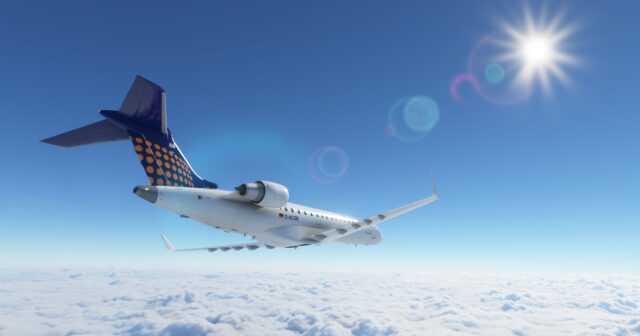
We were able to take the CRJ under our wing (very) shortly before the release, promised at simMarket before this weekend, probably there on Thursday March 18th, in order to give you a (very) quick first impression. After all, the Aerosoft CRJ promises to be the first relatively system-deep airliner, so expectations are high and many are certainly wondering whether it is worth buying or not. This short pre-release review is intended to make the answer easier to this question. After more detailed tests, we will publish a detailed review of the CRJ. Therefore, please only take this first impression as such!
Installation:
1.60 GB of data are shoveled into the community folder for the CRJ, the installer finds the MSFS installation by itself. Before the installation comes the very important note:
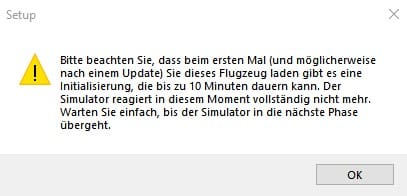
And after the installation – for all doubters whether this was really meant seriously earlier – again:
The main menu of the MSFS then shows the two models that you buy, namely the 550ER and the 700ER.
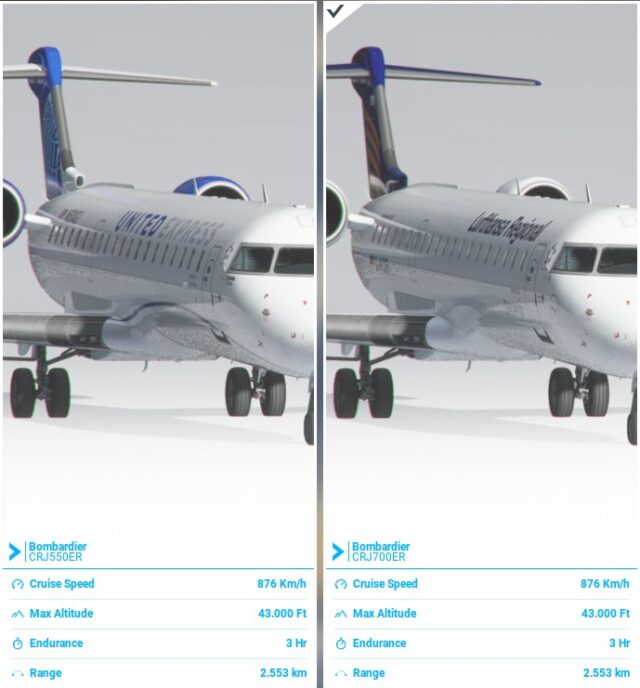
First flight:
I load the 700ER, just because of the Lufthansa livery, and after pressing “Fly now” the long wait finally begins. Here, too, below the Cessna loading screen there is a note (this time in English for me) that you have to wait 10 minutes – even on faster machines. I didn’t stop, but there was no way to avoid it.
So, finally arrived at the Virtual Cockpit, I am pleased with the good frames, I loaded the machine in Paderborn because I want to fly the included, very detailed, tutorial flight. Engines are off, as usual in MSFS on parking positions, but the PFDs are already on. Which state is preset here cannot be said, it is not a “turnaround”, and of course neither is it “cold & dark”.
But no matter, the first glance immediately falls on the tablet installed on the left, which can be switched on and runs with “aeroOS 1.0” shown here. In addition to the desired states of the aircraft, a lot of settings are available (checklist, performance, aircraft [doors, GPU, etc.] , Maintenance and Options). Our detailed review will reveal the details soon. Here I switch to the Cold & Dark as I want (and if I decide so, I can save it as the default state when loading).
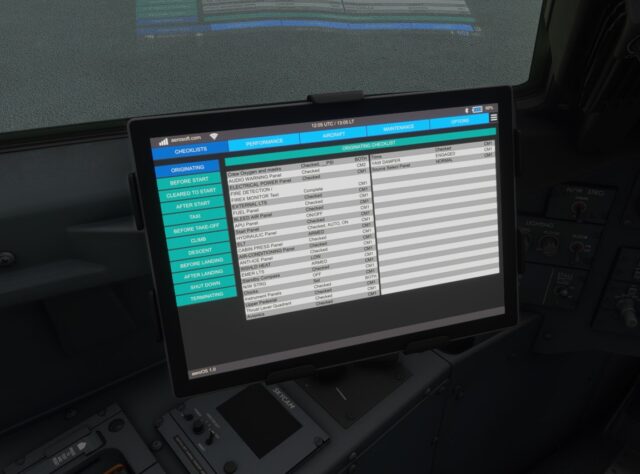
First, let’s go to the 3D exterior model in peace. At first glance, there are no inconsistencies here. If you zoom in quite close, however, the model becomes angular in the details. I have no problem with that because I very rarely stay outside the cockpit. And as I said, you have to zoom in really close.
The decals become ugly pixelated in the vicinity, but here, too, I’m very close with my nose. At normal viewing distances, there is not much to criticize about the exterior model and the textures.
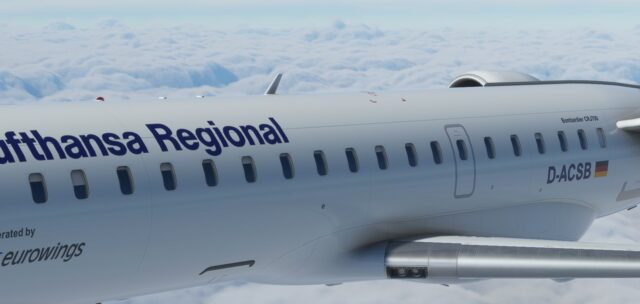
The tutorial flight, which I am beginning to understand, goes from Paderborn to Munich. So back to the Virtual Cockpit and first acclimatized. The VC is superbly modeled! There is nothing wrong with that.
So power on and a little press here and there. Just conjured up the night and tried out the lighting. Here, too, a very coherent picture, both the CRJ with its continuously adjustable interior lighting and the MSFS with the new possibilities are impressive.
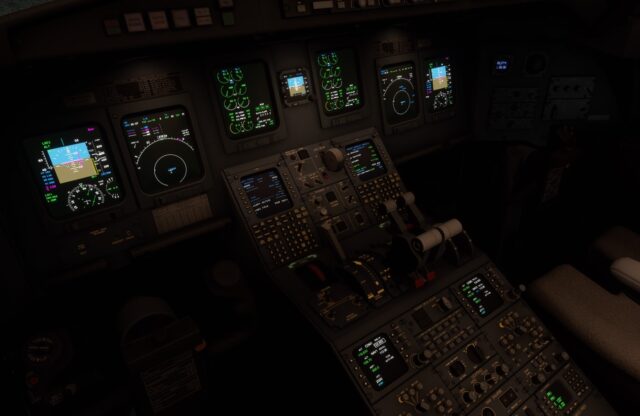
But back to the tutorial. Working through it step by step, I don’t have the time. I take the rough parameters such as load, fuel and route from the 77-pages PDF. It is very practical here that you can enter this data with the virtual tablet EFB and then send it to the FMC. The takeoff speeds are also calculated there and transmitted to the PFD. Entering the route and all of the interaction with the FMS make an astonishingly complete impression. So the FMS already has a certain depth. The route can be edited, waypoints and procedures changed or replaced, airways and their nodes are recognized. Both FMS are independent of each other, so the respective displays are not mere copies.
Furthermore, hydraulic pressures, for example, can be read in the MFD, which can be displayed via the EICAS. This also seems to be almost completely implemented and shows all relevant data. To stay with the example of hydraulics, the pressures are simulated here (at least in the display) and of course change depending on how the pumps are switched. The start of the APU and the engine start proceed as expected, no peaks, no spooling too fast, the engines react plausibly.
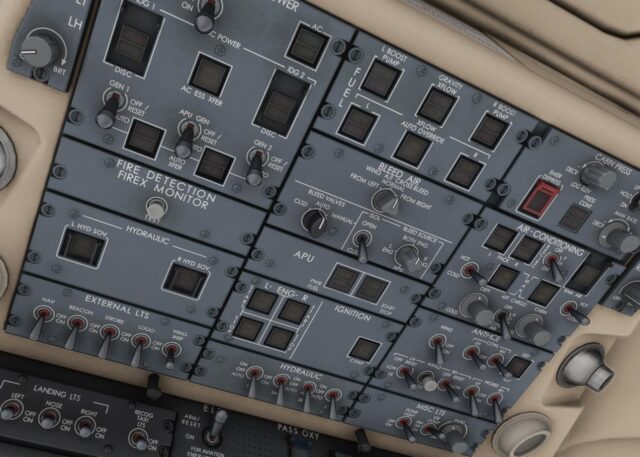
The overhead panel is somewhat “coarser” than the VC in constant field of vision. The switches are a bit angular, but nothing you can really chalk on.
But now off in the air!
The add-on also behaves plausibly when taxiing and taking-off runs. A certain indolence is well implemented. The plane rotates by itself on the calculated VR (if the trim and flaps have of course also been set correctly) and is easy to handle. There are cabin announcements that run automatically. The throttles have detents that work well.
The autopilot does not snap at the wheel when it is switched on and takes over the steering from now on.
The route of the tutorial flight was flown well by the autopilot. On another short flight I noticed how the CRJ shot heavily over the route in tight turns and then turned back again. However, that was a completely unfamiliar “quick & dirty” route. There was nothing to complain about in the tutorial flight.
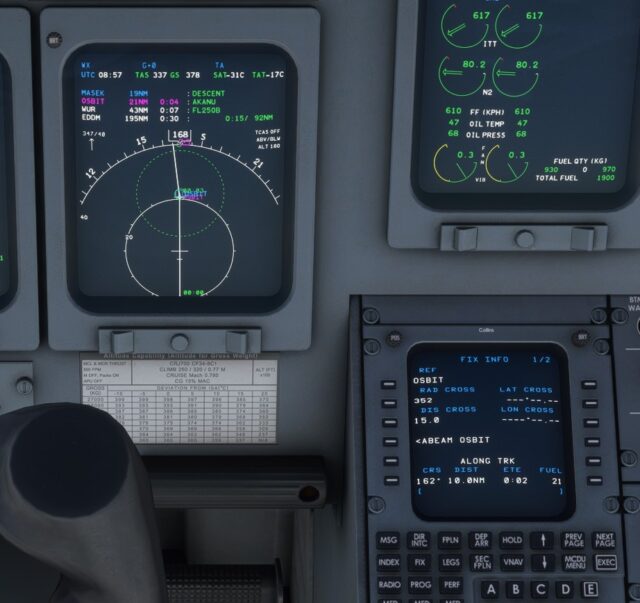
With the FMS, circles can even be created in the MFD, airports, fixes etc. can be switched on or off. As far as I know, traffic display is not (yet) possible in MSFS. I had weather radar on, but no display. Was that due to the weather, which was cloudy but not rainy and therefore couldn’t be displayed? However, I have not elaborated on this.
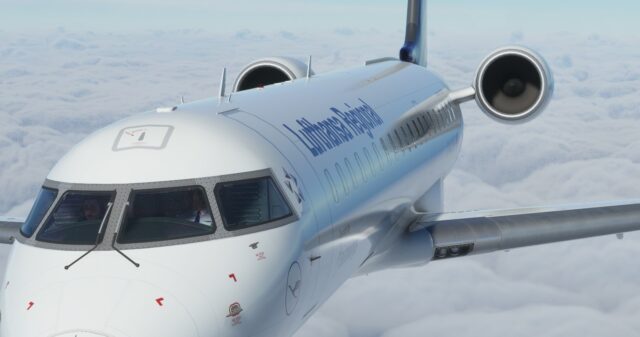
Only with the VNAV I haven’t really gotten to grips with it. In general, VNAV works completely differently here than one is used to from Airbus or Boeing, and there is also no autothrottle. The CRJ uses an asterisk in the MFD to indicate the vertical path that the pilot then has to follow (manually). However, two operating modes can be set in the Tablet EFB. But I didn’t have the time to take a closer look at the VNAV. In any case, there is a TOD displayed and the vertical path, but the CRJ is not as automated as others in the area.
I had problems with the Autopilot maintaining the target altitude. He reduced the rate of climb before reaching the height, but then continued to pull up slowly. The same thing happened to me in the descent, in the end I had to use ALT Hold or VS to get it to zero to maintain my desired altitude. I would like to explicitly add that I have not yet been able to familiarize myself with the systems and that I cannot rule out operating errors!
In any case, it shows that there is still learning potential for the CRJ!
Another feature is the fold-out HGS, which does not provide great depth, but is still a nice accessory.
The landing went well, but here, too, with my current level of system knowledge of the CRJ, I am not sure whether the vertical path of the ILS was processed correctly by the AP. LOC turned green, GS not, although all the requirements were met and in the end it came too deep under the glideslope, so that I ultimately had to switch off the AP. I still need a few more approaches.
I discovered a really big bug after all. There is a SkyCam system on the left in the side console, i.e. a small screen that provides images of the cabin. This can also be switched on and “delivers” “images” from four camera positions. However, the system seems to have been hacked by an elderly man who was able to connect to an on-board camera using secret technical means. One can only guess at the intention; I interpret it as a cry for help to draw attention to the currently very tight hairdressing appointments.
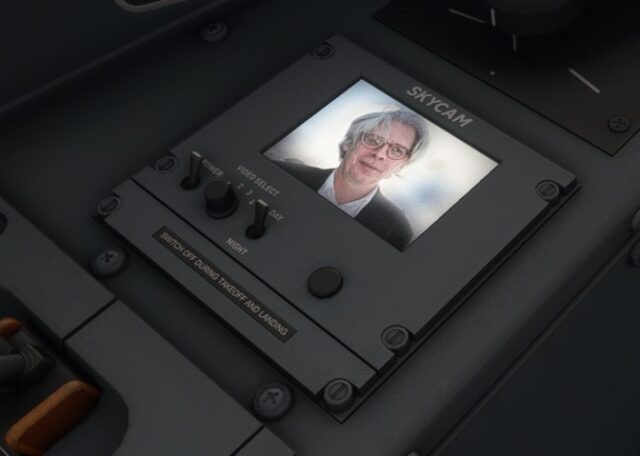
Conclusion:
Buy recommendation? Absolutely!
Aerosoft didn’t promise too much and the depth of the system actually impressed me. As always, you are not allowed to apply the standards of an FSLab, which was not promised by the developers either. I have to take another closer look at the vertical work of the autopilot. Unfortunately, I didn’t have enough time to make a more informed judgment. In general, however, you can cope with it and there are no major blunders. I’m just not sure about the subtleties.
The 3D modeling is very, very good and the performance is excellent.
All in all, this is actually the first system-deep plane for the MSFS that should give the airliner pilots some food in the near future.
by Günter – simFlight.de Germany


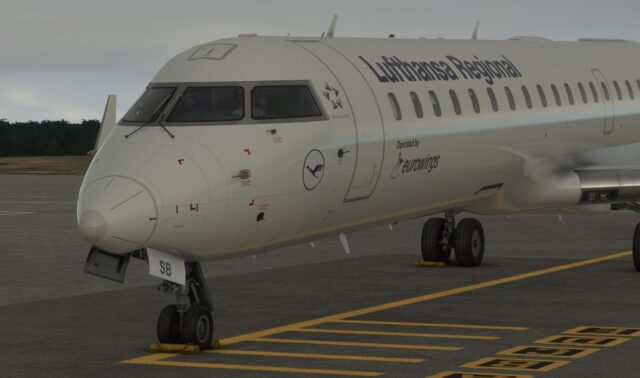
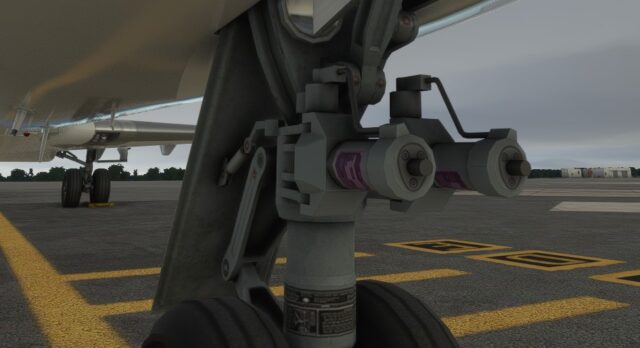
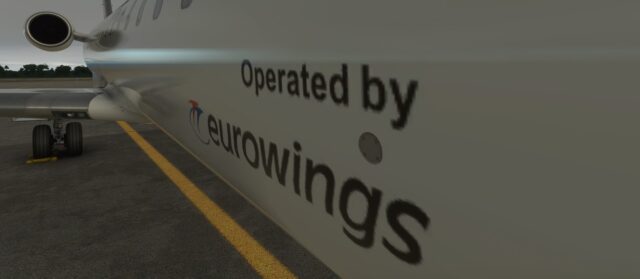

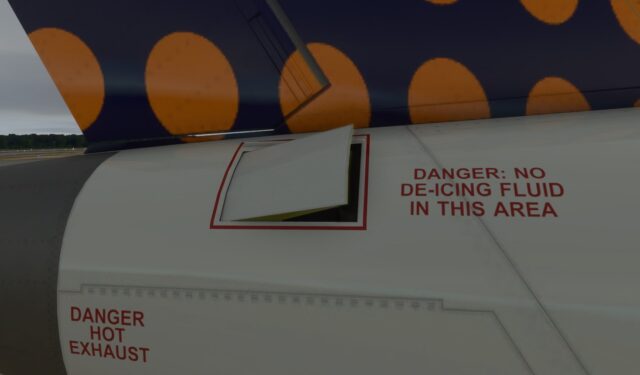
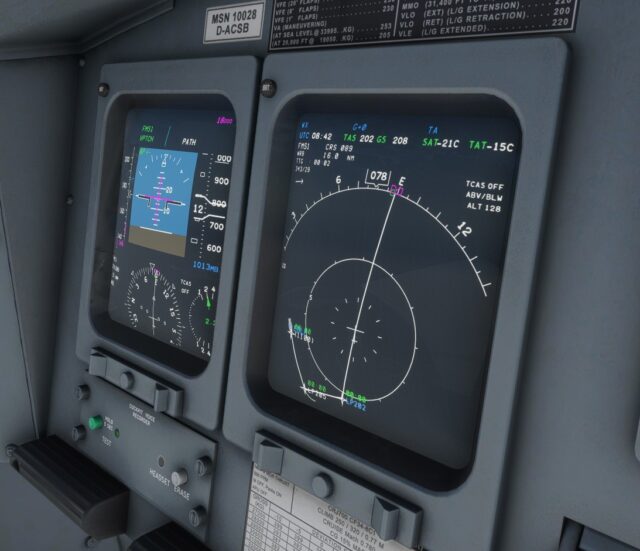
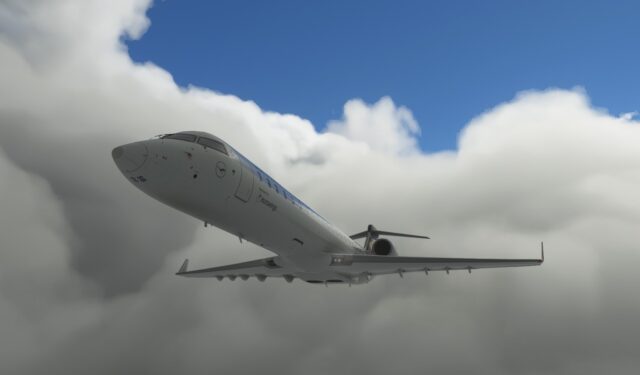
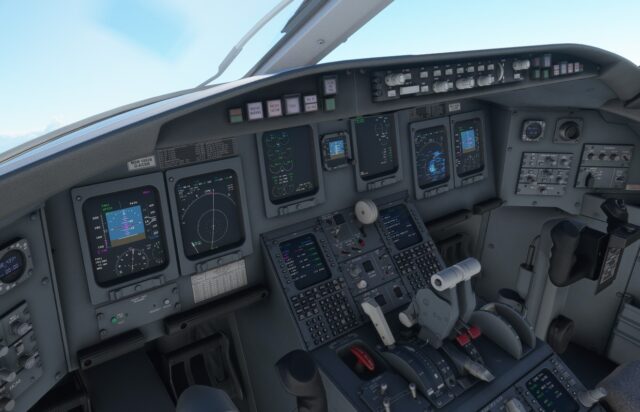
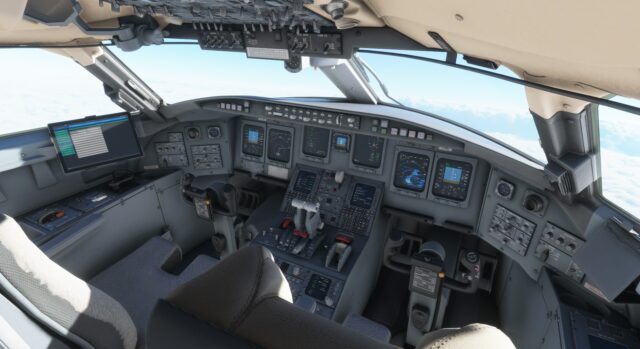
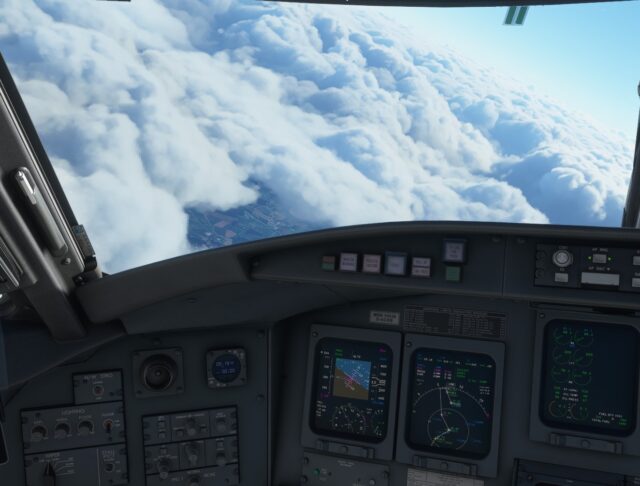
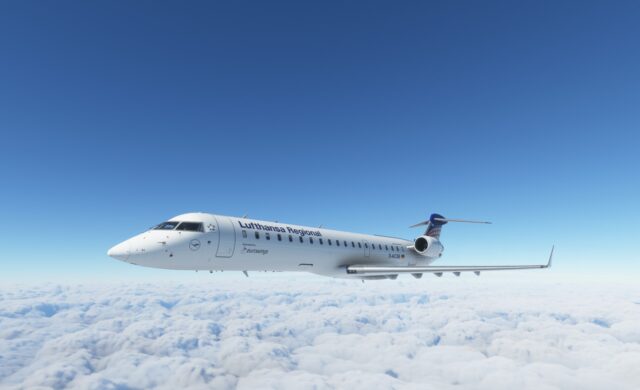
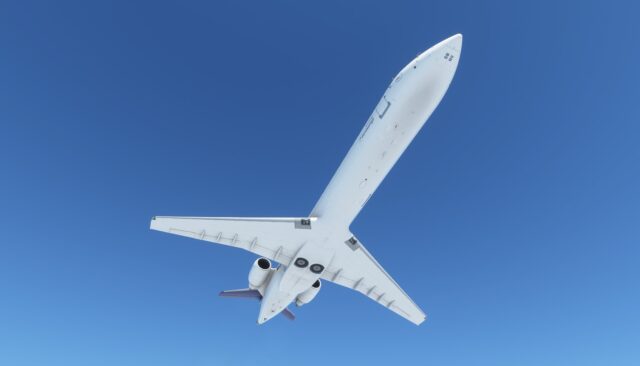
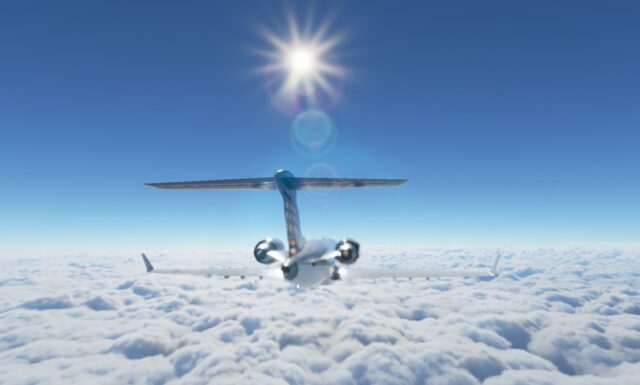
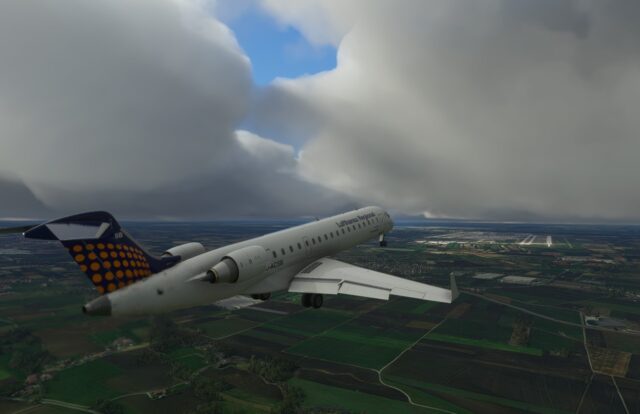
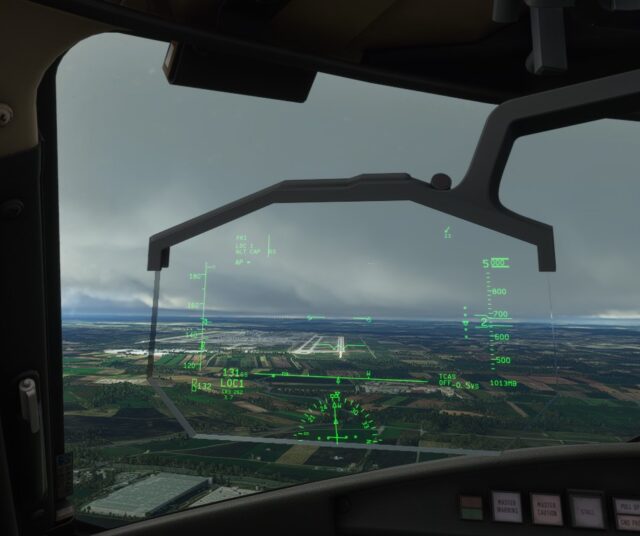





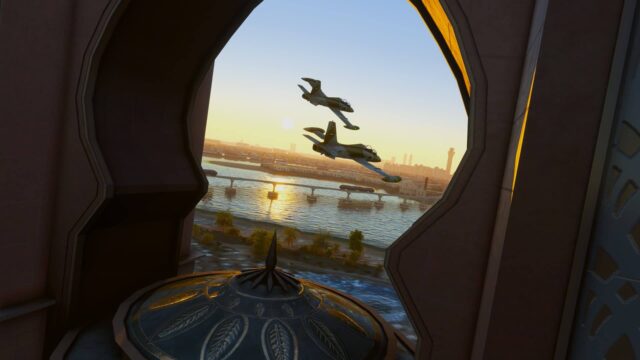
[…] De 550ER en de 700ER. Via simFlight.com kunt u een eerste impressie hierover lezen. Volg daartoe deze link. (Betreft overigens een vertaling vanuit het […]
Is it just me or is the weather radar not working?